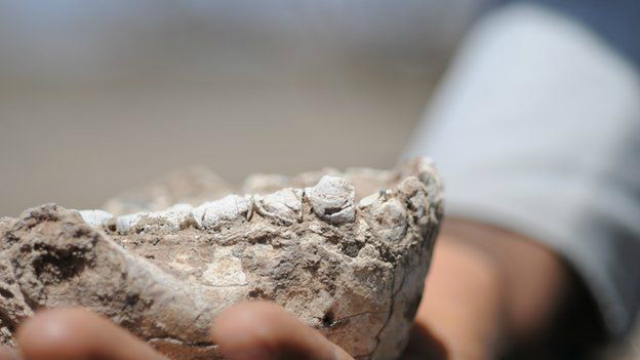An international team of researchers led by Dr. Yohannes Haile-Selassie (Yohannes Haile-Selassie) of the Cleveland Museum of Natural History found the fossil remains of the upper and lower jaws proto living 3.3-3.5 million years ago in Vorsano Mill in the region of Afar (Ethiopia).
The new species was named Australopithecus deyiremeda. Once he lived next to the Australopithecus afarensis – the famous Lucy.
View Lucy lived on the planet 2,9-3,8 million, there are two kinds of proto some time co-existed side by side in the same region.
The new species shows new evidence that once the world could live several closely related species of early human ancestors. Deyiremeda specific name means “close relative” in the language of the region where the remains were found.
A. deyiremeda different kinds of shapes and sizes Lucy thick enameled teeth and robust architecture of the mandible. The front teeth, however, were relatively small, which also points to differences in diet. Small teeth are often associated with active consumption of meat, besides a new type of chewing muscles moved forward (in comparison to Australopithecus afarensis).
“The new species was another confirmation that Australopithecus afarensis – not the only potential ancestor man – says Haile Selassie. – These resources make it clear that in those days there were at least two, if not three, protohuman species, and they lived in close proximity to each other “.

” Information Age fossils were able to establish thanks to good preservation conditions in regional geology, as well as through paleomagnetic data and radiometric dating, – told the co-author Beverly Saylor (Beverly Saylor) from Case Western Reserve University. – The minimum and the maximum possible age of the remains – from 3.3 to 3.5 million years “.
” This new type of Ethiopia takes a long debate about hominin species diversity to a new level – continues to Haile Selassie. – Probably some of our colleagues would react skeptically to the discovery of this new species. However, I think we have to be ready for the new fossil evidence of early stages of evolution, and not to dismiss the fossils that do not fit into existing hypotheses “.
Scientists have long argued that only one species inhabiting the Earth protohuman between 3-4 million years ago, later evolving into a new species. Denial that was found only at the end of the XX century.
In Africa, were found other contemporaries Lucy – Australopithecus Bahrelghazali in Chad and kenyanthropus Kenyanthropus platyops in Kenya. Their fossils have shaken the old theory, although some experts still remain skeptical of these findings.
The latest discovery is not only raises new questions about the evolution of hominin, but also raises questions about how several species of ancient people coexist on the same land and shared their resources.
Details of the research were published in the journal Nature.
Let’s add that not so long ago, anthropologists have discovered in Kenya tools older people.
No comments:
Post a Comment